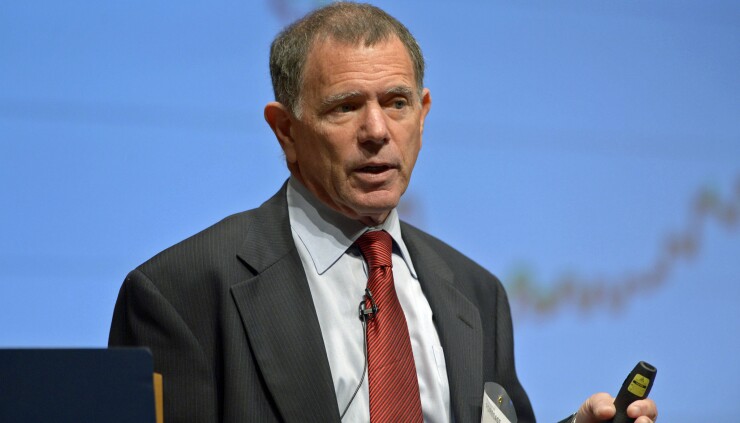Expansionary fiscal policy, Biden’s
January’s drop in retail sales and housing starts was due more to the weather in the eastern U.S. than a pullback on the part of consumers and builders, Jerry Nickelsburg, director of the UCLA Anderson Forecast said in his national forecast. Hiring remained strong, there was not a dramatic shift in inventories, the backlog of durable goods has grown and factory construction is soaring, he said.
“Though core inflation is coming down slowly, we do not expect the Fed to decrease the Fed funds rate until later in the year and then after several rate cuts to hold the rate, where it would then sit in the mid 4% range through the forecast horizon,” Nickelsburg said. “Our full-year inflation rate forecasts are for a drop to 2.5% in 2026, higher than the Fed’s target of 2%, but at what we expect to become the new normal.”
UCLA Anderson Forecast
Monetary policy that pushes up interest rates does not tend to have a contemporaneous impact on the economy, but shows up in interest-sensitive sectors six to nine months after the Fed increases rates, Nickelsburg said.
“Markets are continuing with a rolling prediction of lower future rates in the near term,” Nickelsburg said. “That prediction has led to an inverted yield curve; one where short rates are higher than long rates.”
“The current inversion is now the longest-running inversion and given the stance of the Fed and the expectation that sooner or later (we are predicting later) the Fed will decrease the Fed funds rate substantially, our expectation is for the yield curve to remain inverted for some time,” Nickelsburg said.
In December, the Forecast predicted gross domestic product growth in the fourth quarter of 2023 to be 1.7%. It ended up coming in at a much higher 3.2% annual rate of growth. That was owing, in part, to strong consumer spending, Nickelsburg said, but also to inventory replacement after the holidays. The forecast now expects less inventory adjustment in the current quarter and a moderation of consumer spending growth. As a result, the GDP growth forecast for the first quarter of 2024 Q1 is lower, but still a respectable 2.2%.
California’s GDP grew at a 3.8% compound annual rate from the first to the third quarter of 2023 (the latest data available), faster than the U.S. and all but three large states: Washington, Florida and Texas, according to the Forecast.
Tech and aerospace drove growth in California and Washington, while the Texas and Florida economies benefited from in-migration, rather than productivity and income gains. Construction for new housing benefited both Texas and Florida, and the latter also experienced growth resulting from reconstruction of hurricane-devastated areas.
Despite population declines in California, per capita income growth continues to rival similar large states across the country. While there are still challenges ahead — notably, state and local government finance, homelessness and out-migration — the forces driving California’s economy remain robust.
Risks to the forecast include a protracted government shutdown, say the economists, though that threat has been averted for now. Geopolitical events could also threaten the current growth pattern, as could different national economic policies in 2025 following November’s presidential election.
AI, and new technology in general, was counted as an upside, though the effects of that burgeoning technology are not expected to be felt until 2026.
The California economy is expected to continue to grow faster than the U.S. but not by much, Nickelsburg said.
The risks to the California forecast are the same as those for the nation: political and geopolitical, Nickelsburg said. There is the potential for interest rates to disrupt the current expansion, and increased international immigration and accelerated onshoring of technical manufacturing to the upside, he said.
Though a recession is not coming in the next few years, there is a lot of risk, Nickelsburg said pointing to the conflict in the middle east and uncertainty around monetary policy.
